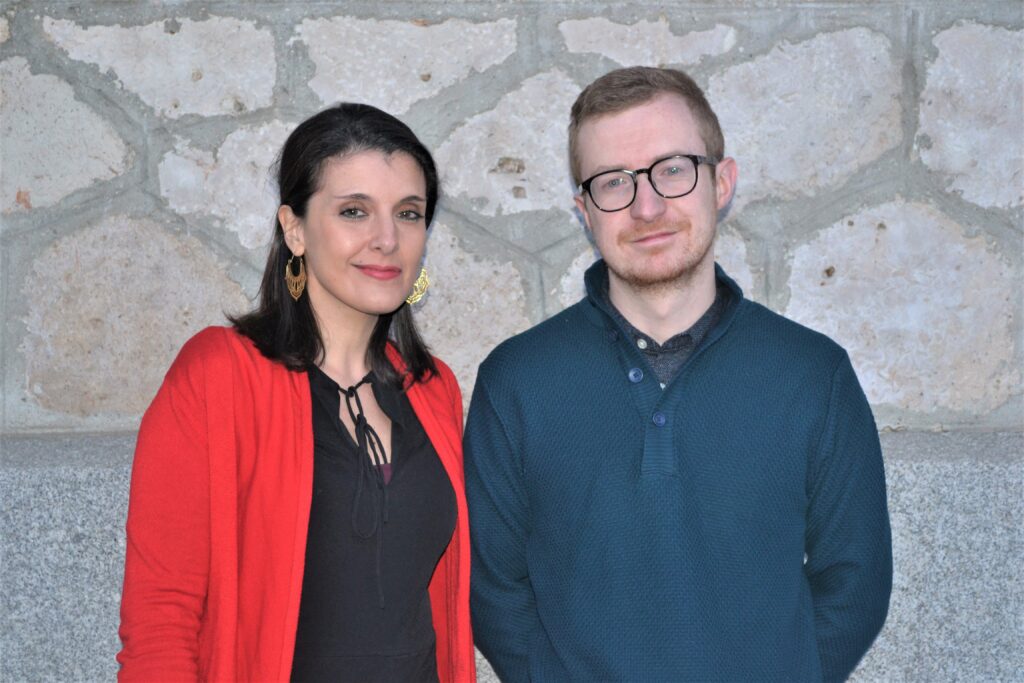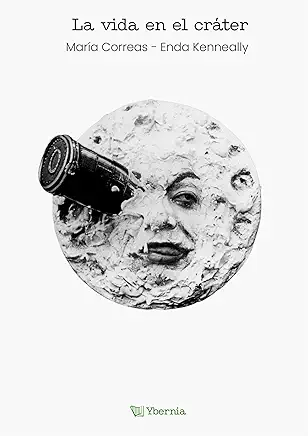I am delighted to welcome Enda Kenneally and María Correas as my guests on this month’s blog post. They are the co-authors of two novels – Verano 69 and La vida en el cráter – as well as a book of essays focused on fake news – Fake News! Bulos que cambiaron el curso de la historia. Their latest project is the founding of a bilingual publishing company, Ybernia, that draws on their combined years of editing, writing and translating experience in both English and Spanish.

What kind of books do we publish at Ybernia? The title of this blog post asks a pertinent question, and one we have been asked many times before. People assume that a publisher, like a book, has something to say, a perspective to share, something unique and valuable to offer the world.
A pithy but accurate answer would be good books. Or considering that we are a bilingual publisher, with an interest in Ireland and Spain, books that capture this Hiberno-Spanish experience. There are a lot of cultural and historical links between both countries, links that are little known but much enjoyed when discovered by readers.
Dermot Miller’s The Way, one of our new releases, is a great example of the stories that interest us. His protagonist is haunted by the Troubles of his native Belfast, and he tries to find absolution on the Camino, the pilgrim route that ends in Santiago de Compostela. For the first time, these two distinct experiences have been woven together into a compelling thriller that takes place in northern Spain and the inside of a man’s soul.

La vida en el cráter: Our kind of book
Another characteristic of our publishing philosophy is that we want books that take something familiar and turn it on its head. And while we work with many excellent writers, we want to discuss what we have written ourselves; it is a clear example of how we have put our own values into practice.
La vida en el cráter is a novel set in Madrid. Thomas, an Irishman, is a lonely immigrant who finds a connection with the historical figures that have given their names to craters on the moon. Through him, we meet a diverse cast of characters, allowing us to focus on the surprising details of science and knowledge, moving past the obvious descriptions of the vastness of space and twinkling stars.
A history of books
Sacrobosco was an astronomer from the Middle Ages, and his chapter was an interesting one to write. Little is known about him, and whatever historical record exists is conflicted. He has different years ascribed to his birth and death. As historians, this can be frustrating. As writers, however, it feeds our creativity, allowing us to play with concepts of time and space. By leaning into its elasticity, we incorporated scientific ideas into our writing structure.
Sacrobosco’s most famous book set forth the idea that the world was a machine. While this idea is wrong, we must not assume that people back then were less intelligent than us. In fact, Sacrobosco understood that the world was not flat, for example, and that people living near the equator saw a different night sky to Europeans.
His book was the first printed book in history to have colour images, and it is here that the chapter moves beyond descriptions of the inky black night and into more invigorating territory. Each character in the book offers us something new, and with Sacrobosco we get a glimpse into the evolution of a beautiful thing – books.

Changing perceptions
Speaking of books, the perception we have of the classics (such as Dante’s Inferno) has changed throughout time. Through writing and reading them, we generate ideas. These ideas vary depending on the reader, influenced as they are by their particular century’s mores.
Furthermore, the classics are sometimes feared because they are seen as inaccessible. But in our chapter about Dante’s Inferno, we get to approach this highly influential work in an accessible way. Through it all we show the link between books and space and time, and how our understanding of these concepts is a constantly evolving thread throughout history, where ideas get reworked and redefined time and again, just as when we are writing.
New worlds
When we think of Cyrano de Bergerac, love may be the first thing that springs to mind. But he was also a duellist that defended just causes, even when success did not seem so probable. And he was a scientist, curious about the universe at large.
His mentor was Pierre Gassendi, an astronomer who observed Mercury move across the sun’s surface and who used a camera obscura to measure the diameter of the moon. It is little wonder, then, that Bergerac wrote sci-fi novels, published after his death, that grappled with quite modern concepts and inventions, from gravity to magnetism, and from mobile homes to parachutes. In this chapter, we really wanted to transmit how the 17th century was buzzing with discoveries and curiosity, as well as shine a light on Bergerac’s sadly forgotten sci-fi books.
It is also interesting to understand the context of his writing. In this time period, competing empires carved the world into colonies, and arriving in the New World in this era was so strange and exotic, it might well have been Mars. Bergerac helps us imagine a scenario where the exploration of space and meeting new civilizations leads to collaboration rather than conquest.
Lasting images
Since their development, photographs have been a tangible example of our interest in time and space. This theme has been an obsession for humans throughout history and has thus occupied all forms of human artistic expression, from literature to sci-fi movies. It is a defining characteristic of the chapter about Daguerre in our book.
Through learning about the first photographs and dioramas, we get to reflect on this fascination our species has to capture a fleeting moment. It is easy to see the parallelism with us looking into space: when we look at the universe, we see a frozen moment from an ever-changing landscape light years away from us. In the first photograph taken by the famous Louis Daguerre, we come to realize that what is recorded for posterity is partly planned, partly accidental, and highly circumstantial, and therein lies its beauty.

Rediscovering lost heroes
We have mentioned four protagonists in detail, but here are three more. There’s Murakami, the Japanese astronomer who was active after WWII, when America occupied Japan. Curiously, stories about UFOs started to become popular at this time. The metaphor was clear, the Americans were the new extra-terrestrials. These stories shared a parallel with Japanese myths from the past, when UFOs were small wooden ships rather than flying saucers.
There’s Yuri Gagarin, the Russian cosmonaut who had a noble hunger for exploration, who achieved his dream through the ignoble Cold War, when the USA and Soviet Union were trying to outdo one another. As Russia failed to keep pace with the Americans, good pilots like Gagarin lost their lives in faulty planes and rockets.
Finally, Agnes Clerke was an Irish scientist who has been forgotten, a fate that has sadly befallen many female pioneers. She was the Stephen Hawking of her day: her book about the universe made such topics accessible and popular for the general public. She lived abroad for a few years, teaching English and writing as a freelancer, like many foreigners in Spain today. Through her experiences, we observed how some foreigners adapted to their new country, and how others didn’t, preferring instead to live in their own Anglophone bubble.
Final thoughts
Does this article answer the pertinent question of what we publish? Yes and no. Culture is fluid, far from an exact science. Like a writer, we have our parameters, an idea of ourselves, but we also feel a story first and explain it later. Every book is the opening line of a conversation, and it should inspire in you the desire to answer back.
We feel blessed that our forthcoming publications have inspired us. We have another Irish thriller set in Spain, a book of haikus, an illustrated children’s book, memoirs, and so much more.
We’d love to hear from you. For information about the books we publish, visit us at our website or check out our podcast, where we often talk about books and other cultural matters.
